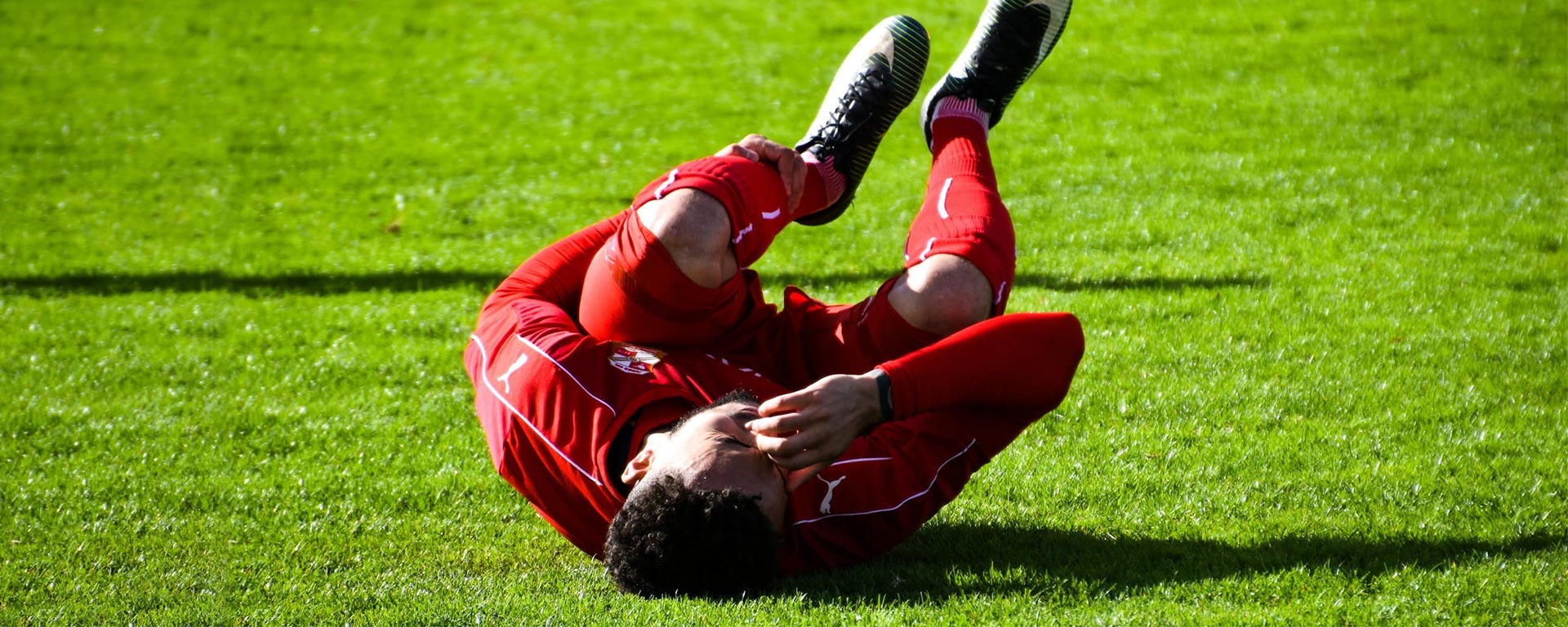World Cup season is here and at this time, we all become aware of just how popular the sport is around the world.
If you regularly play or coach football, you’ll know how easy it can be to suffer an injury on the pitch. To help you avoid these common footie injuries, we’ve outlined the ones that are most likely to see you out of action for several games and detailed how you can work to reduce the risk for an all-round safer and better on-pitch performance…
Injury to the hamstring
Obviously, legs are a vital part of your body when playing the beautiful game — but overstretching major muscles, like your hamstring, can result in pain and swelling. Your hamstring is found at the back of your thigh and runs from the hip to the knee. If you tear your hamstring, you could be out of action for a while, however, if you simply pull your hamstring, you should be fine to continue.
Are some players more likely to get a hamstring injury? Perhaps. Reportedly, people with existing back issues are more susceptible to strained hamstrings, so to avoid this injury, loosen your back with exercises such as lumbar rotation stretches (lying on the floor and rolling your knees from side to side). Basic glute stretches will ease muscles around your hips, while yoga will help you stay flexible, which will lower the risk of hamstring strain. Squats, lunges and hamstring kicks are also great preventative exercises, as they work to strengthen the hamstring muscles.
If you really want to lower your chances of a hamstring injury, try the Nordic ham curl:
- Kneel on the floor and hook your feet under something sturdy and heavy that can take your weight or ask a partner to hold your feet to act as an anchor.
- Engage your core and slowly lower yourself to the ground, using your hamstrings to keep your body straight.
- Reach the ground, then push yourself up and repeat.
Injury to the ankle
Your feet are made up of lots of bones and the soft tissue in this part of your body can get easily harmed when playing this foot-focused sport. Spraining an ankle means you have damaged your soft tissue, and according to the CSP (Chartered Society of Physiotherapy), approximately 70-85% of these injuries are ‘inversion’ sprains, which means the ankle has been turned inwards — common when tackling and dribbling the ball.
To strengthen your ankles, try these movements:
- Ankle circles (both clockwise and anti-clockwise).
- Calf raises.
- Shin raises (lifting your toes, rather than your heels, off the ground).
Injury to the anterior cruciate ligament (ACL)
Balance, coordination and stability are three essentials components of a decent football player, and your ACL plays a large role in the steadiness of your knee. However, it’s often damaged by the twisting and turning of the leg. If you hurt your ACL, it’ll be painful and you’ll likely see swelling around the area. But before then, you may hear and feel it pop or snap…
Your hamstrings and quadriceps are key to protecting the safety of your ACL and ensuring that it isn’t harmed during a game. According to HSS, Hospital for Special Surgery, you should do plenty of leg stretches like squats and walking lunges. Having good balance — or proprioception — is vital if you want to avoid injuring your ACL too, so practice standing on one leg (30 seconds on each) regularly to boost your stability. These exercises also help prevent injuries to your menisci, which are cartilages that protect the knee joint.
Injury to the groin
Groin injuries are always heard of in the news with regard to professional players, as it’s such a simply injury to incur. If you strain your groin, you’ve basically over-extended your abductor muscles, found in your inner thigh. A slight strain will often cause some pain, however, serious groin strain injuries can impede on your ability to walk and run, which is a serious flaw for a football player.
During your pre-match warm-up and even as part of a daily exercise regime, try stretching your inner and outer thigh muscles. Sports massages are also great for keeping muscles supple. A strong core enhances pelvic stability, which will also reduce the chance of groin strains, so do plenty of planks and crunches as part of your basic workout routine. Resistance bands are also very handy for strengthening your inner thigh muscles and preventing groin strain.
Get ready to excel in each match
Ever since school PE lessons, we’ve been told to warm-up prior to any exercise — and this remains sound advice if you’re a footballer. According to a scientific study, taking part in a structured warm-up is effective at stopping players from suffering common football injuries and can reportedly even lower these by approximately 33%.
Brief cardiovascular workouts encourage blood to your muscles, which is essential before a match. Here’s a top warm-up session to help you prepare your tendons, ligaments and muscles for a good performance:
- 5 minutes of jogging and side-stepping to boost your core temperature.
- 15 minutes of stretching, focusing on your quads, glutes, hamstrings, inner thighs, lower back, calves, Achilles tendon, and hip flexors. You should hold your stretch for ten seconds every time.
- 10 minutes of mimicking football movements without a ball including high kicks, squats, jumps, and side-foot passes.
- 10 minutes of practicing shooting, heading, passing, and dribbling as a team with a football.
Another part of your pre-match regime you could look at to boost your performance and prevent injury is food. Eat plenty of protein and carbohydrates — including eggs, whole-wheat pasta, brown rice, turkey and salmon — to build muscle and deliver energy. Also, lower your alcohol intake — it dehydrates you and leaves your muscles more susceptible to cramping and injury. Omega 7, iron, vitamin C and other supplements may also help to protect your tissues and boost recovery rates should an injury occur.
Never miss a match with these top injury-dodging football tips.

